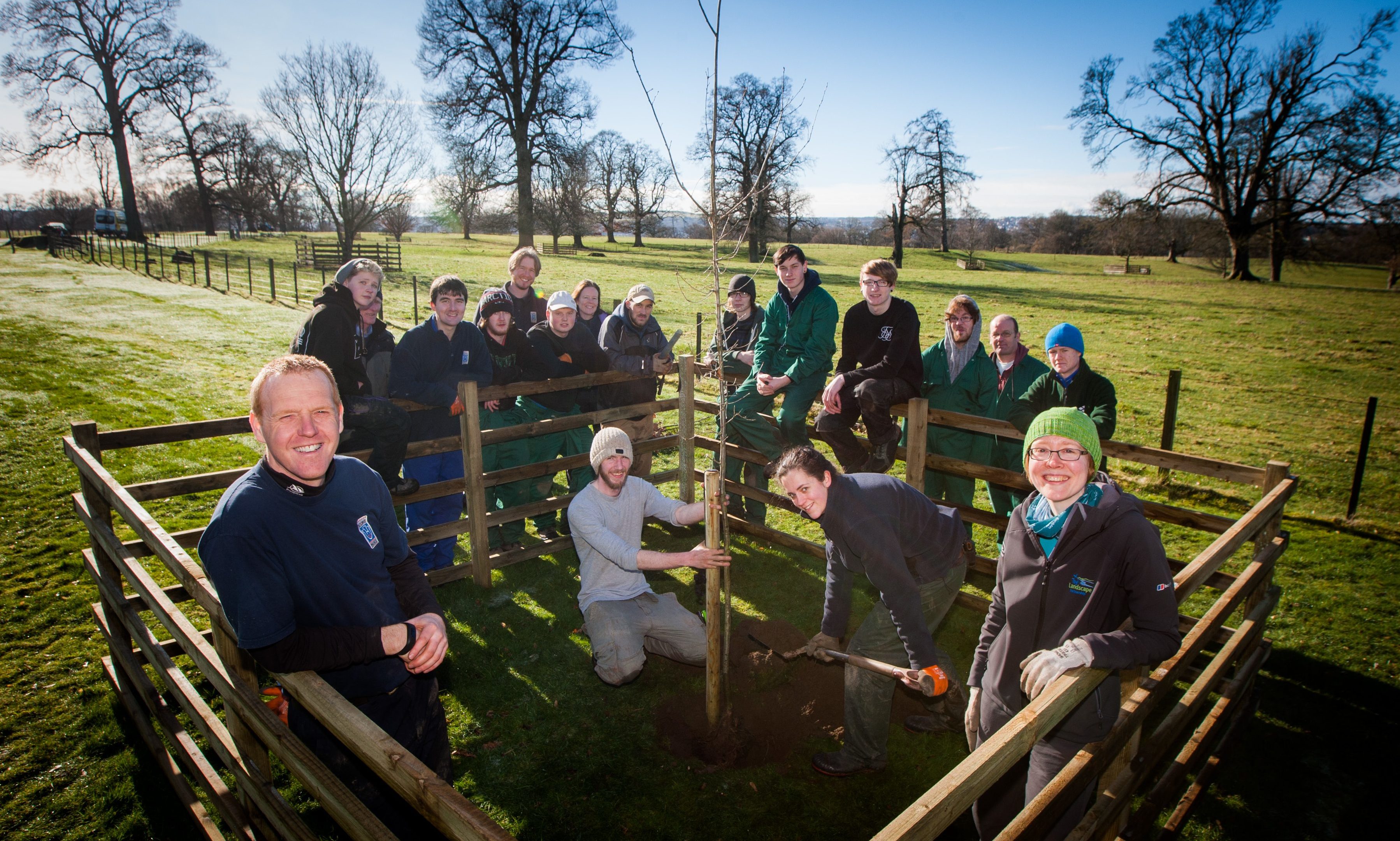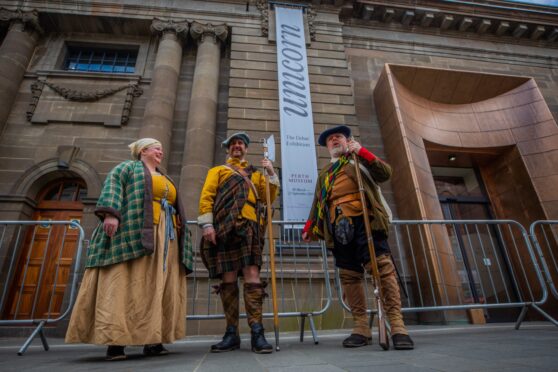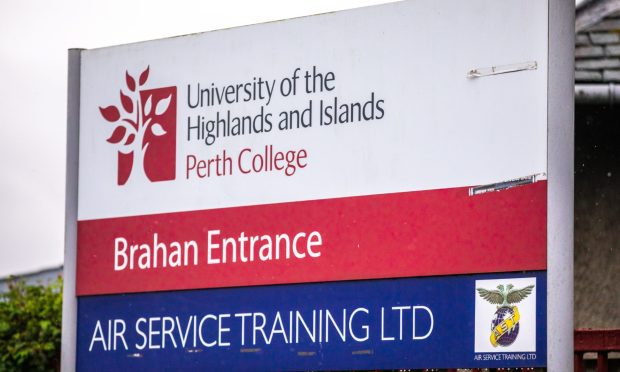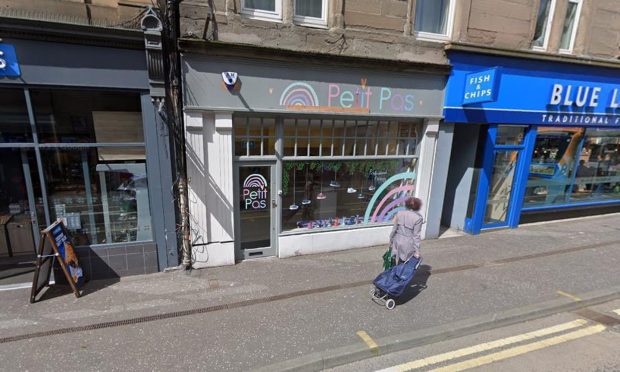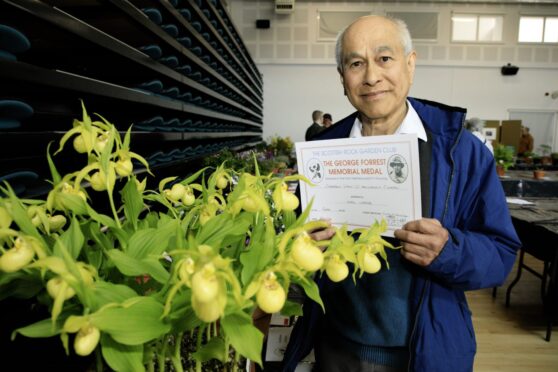The blossoming project to replace dozens of oaks which were chopped down more than 200 years ago has taken root at Scone Palace.
The landscaped grounds were originally laid out between 1790 and 1812 but in the late 18th century, Thomas White the Elder designed a scheme which required many of the very old oak trees to be felled.
This enraged the second Earl, who started planting to replace them. His son, David, the 3rd Earl of Mansfield, is said to have planted more than 2,863,000 trees.
This legacy was continued yesterday in a joint project involving Tay Landscape Partnership and a team of horticultural students from Perth College, which saw the planting of 30 young oak trees under the supervision of Scone Palace’s head gardener, Brian Cunningham.
He said: “A recent review of the trees identified several giant specimens which have grown too fragile or have been damaged by storms.
“The new oak trees are the first of many young trees to be planted at Scone Place, as part of an ongoing programme in partnership with the National Tree Collections of Scotland to restore this historic landscape and ensure it remains magnificent for many years to come.”
The planting of the trees at Scone is being funded by the Tay Landscape Partnership, with support from the Heritage Lottery Fund, Scottish Natural Heritage and the Community Environment Challenge Fund.
Catriona Davies, access and biodiversity project officer for the Tay Landscape Partnership added: “This is a great opportunity to help revitalise the historic park land at Scone Palace, with native trees that will be of huge benefit to wildlife for decades.
“TayLP is all about getting people involved in their local environment, so I’m delighted that the students from Perth College have been able to come out and help plant the trees today.”
In 1885 an article in the Journal of Horticulture and Cottage Gardener praised the park and described the ‘magnificent trees which are monuments of past ages’.
The trees along the old driveway were probably planted in the mid-18th century, with most of the other trees on the estate added between 1800 and 1840. The open ‘deer park’ planting of Scone Palace parkland is typical of many Perthshire estates, and includes native species such as oak, beech, lime, sweet chestnut and copper beech, many having grown to a great age.
